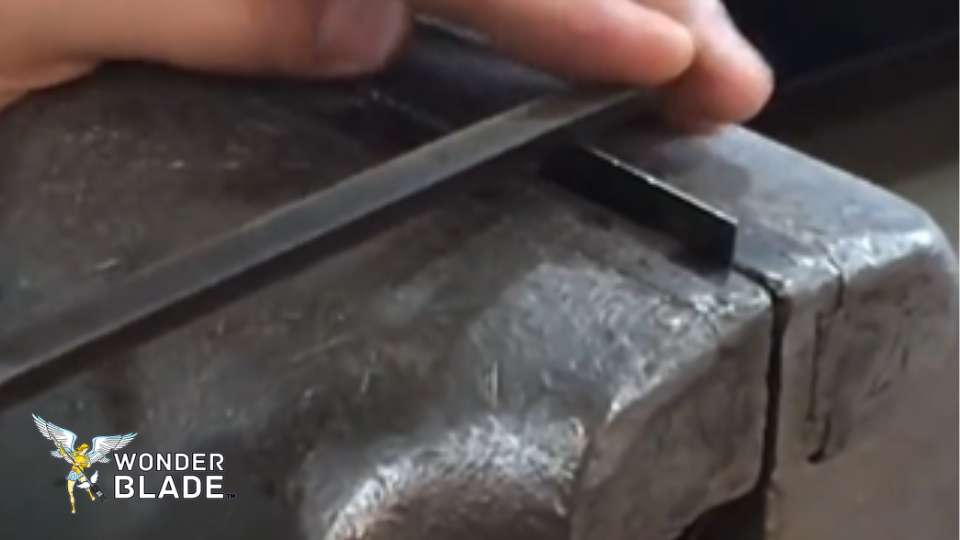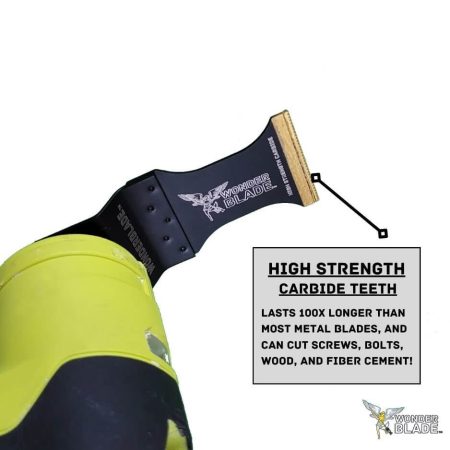
High-quality oscillating tools can outperform in various jobs. Yet, maintaining these high-quality products is often necessary, one of which are your blades, and here you’re learn how to sharpen an oscillating multi tool blade or another better options.
Having your oscillating tool allows you to do a lot of tasks yourself. Thus, learning how to sharpen a oscillating tool can save a lot of labor and time. It puts you in control of your tools.
Generally, these tools vibrate within a small range of motion. This vibration allows users to cut and sand through various materials. But, over time, you might encounter a dull, ineffective blade. Here’s where regular maintenance can extend the tool’s blade life. It enhances its cutting efficacy, allowing you to keep your tools in top condition.
You may be tempted to sharpen the blades on your multitool, but it’s worth considering whether it’s truly effective. In many cases, sharpening can temporarily restore performance, but it often doesn’t match the precision and efficiency of a brand-new blade.
The oscillating multi-tool, a versatile handheld power tool, is a game-changer. It rapidly oscillates heads that can accommodate various attachments, bridging the gap between heavy-duty power tools and tools for fine-shaping tasks. Its primary functions include grinding, scraping, and cutting, making it an essential tool for many tasks, especially in confined spaces.
While the primary function of these blades is cutting through wood and drywall, they are also adept at sanding, scraping, and performing various other tasks and materials. Each is specifically designed for different materials and applications. The rapid oscillating motion back and forth generates the friction needed for cutting.
These blades can oscillate at incredibly high speeds. It is often thousands of times per minute. It enables the tool the power to cut through a wide range of materials effortlessly. However, this results in a lot of wear and tear, which frequently causes the blade to become dull or unusable.
While frequently replacing blades can be expensive, learning how to sharpen an oscillating tool blade can be a cost-effective alternative. Sharpening your tool may help keep it sharp and efficient for a short while.
You can use different equipment and supplies to sharpen the oscillating tool’s blades. Follow the steps below for how to sharpen a oscillating tool blade to get your blade as good as new.
Remember, safety is the first action you should consider. Always use safety gloves and eyewear before using any equipment. This responsible approach to safety can make you feel secure and confident in your DIY tasks, knowing that you are taking the necessary precautions to protect yourself.
An oscillating saw blade sharpener is the easiest and surprisingly useful if it’s available and set up correctly. These sharpeners are specially designed and work well for swiftly sharpening and reshaping oscillating saw blades, particularly if they are dull or have minor damage. These dedicated oscillating saw blade sharpeners are more precise than general-purpose tools like grinders, making them ideal for maintaining small or intricately shaped blades.
Learning to use an oscillating saw blade sharpener could seem overwhelming to someone who has never used one. Holding a blade against the sharpening tool may appear easy, but mastering the skill requires precise hand control. Follow these steps:
When sharpening small blades, it’s crucial to maintain steady control. Always operate the rotary tool or drill at the recommended speed settings for optimal control and safety. With these unique oscillating saws, multiple vendors produce blade-sharpening tools. The size of the sharpener’s roller is a major drawback. A sharpener for one oscillating saw blade size might not work on another because different oscillating saw blades have different tooth shapes and sizes.
Therefore, owning a large collection of blade sharpeners is not wise either.
A motorized teeth blade sharpener is a specialized tool designed to sharpen the small, intricate teeth of oscillating multi-tool blades. Compared to other solutions, this one may be more useful because it is designed to meet the tooth profiles of oscillating blades. They frequently come with various attachments or settings to accommodate varying blade sizes and tooth shapes, offering a customized sharpening option.
Clean the blade and sharpener after sharpening. Blade and sharpener maintenance requires proper storage. Small teeth on oscillating multi-tool blades can be sharpened easily and effectively with the help of a teeth blade sharpener. But you will need to purchase it specifically to sharpen the blade of an oscillating tool.
After your blades have been ground, you must use sharpening stones to smooth and polish each tooth individually. Each type of grit is suitable for different sharpening stages. While you can quickly remove a lot of material with a coarse sharpening stone, this may not result in the best sharpening, especially when dealing with small, intricate teeth. The blade can be polished and honed to a razor-sharp edge using fine grain, but this process is labor-intensive and less practical when sharpening each tooth separately.
After sharpening, clean the stone and blade. Store the stone properly to prevent damage. This step is important for maintaining the tools, but the overall process may not be practical unless no other sharpening method is available.
Diamond files offer the precision needed for sharpening each tooth of an oscillating tool blade, particularly if the blade is extremely dull or made of hard material. While diamond files are more effective for sharpening, the time and effort required for this method also make it a last resort.
After sharpening, test the blade by slicing through a material sample to ensure that all teeth are sharpened evenly. Clean the blade to remove any debris. While this step is important, the overall process may not be practical for regular use.
While sharpening is necessary when using tools for an extended period, you may try a few tips to extend the time you can put off sharpening.
There are multiple ways for how to sharpen a oscillating tool. But while sharpening an oscillating tool blade is often the first approach that comes to mind, it’s essential to evaluate the situation carefully. Sharpening might not always be cost-effective, especially if specialized tools for different blade sizes are required.
Oscillating tool blades can dull easily; buying blades in bulk and replacing them as needed is usually more economical than attempting to sharpen them. Purchasing quality interchangeable blades will guarantee that you always have a sharp tool on hand without having to deal with regular maintenance.

*Save yourself time, money, and hassle with the best oscillating tool blade in the industry that lasts many cuts through wood, screws, fiber cement, sheetrock, plastic, and more.*
Submit your questions, thoughts, or concerns to help us make better content just for you: